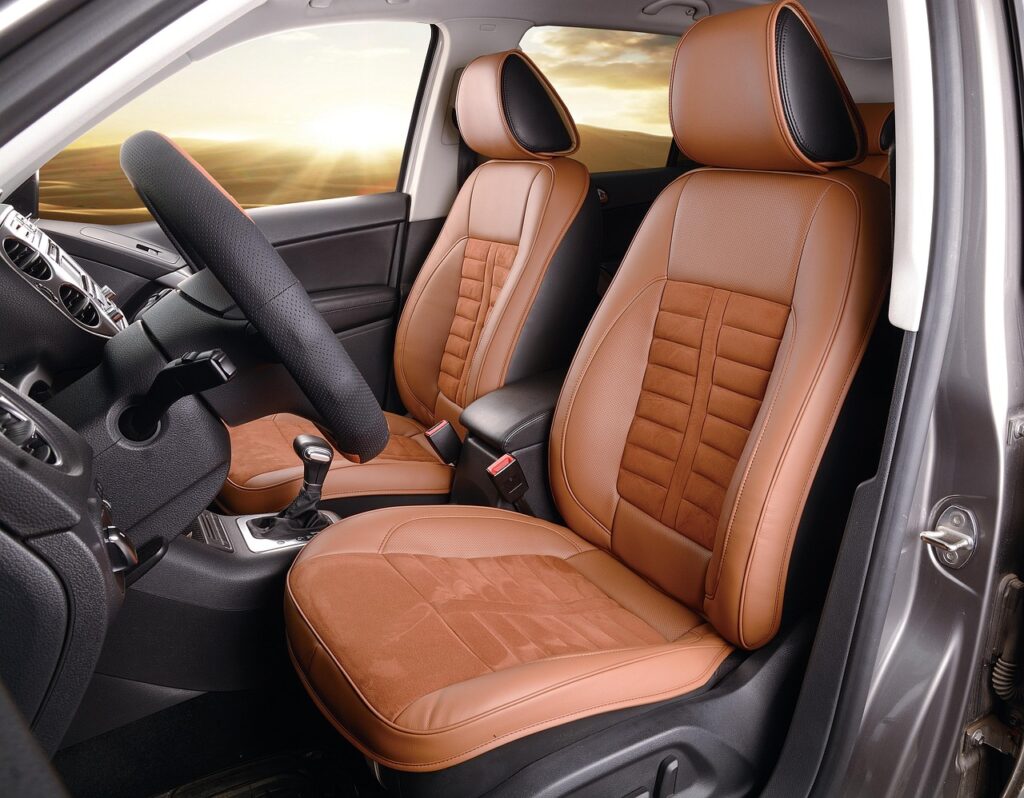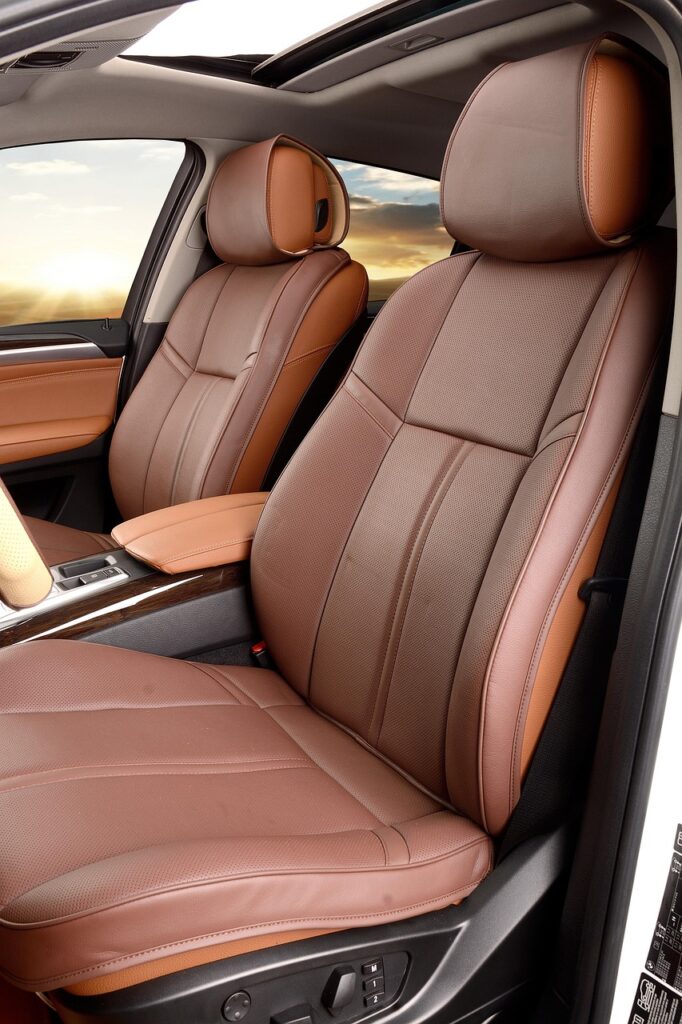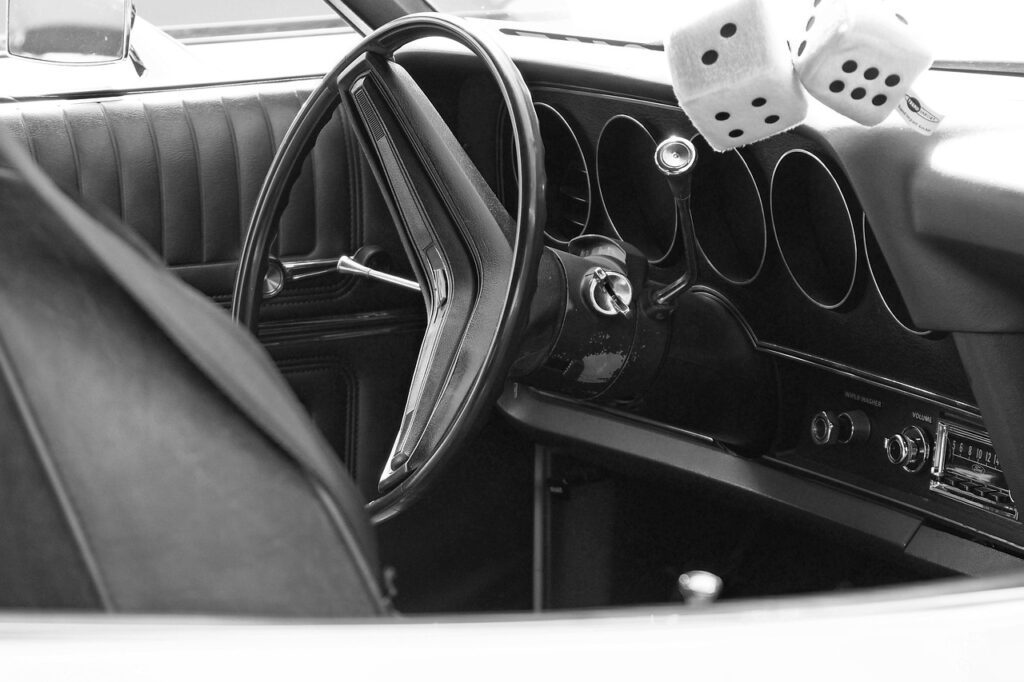
Have you ever found yourself squirming in your seat, shifting endlessly to find that elusive sweet spot, only to end your journey with aches, pains, or that nagging feeling of discomfort? It’s a remarkably common complaint, particularly for those who spend significant time behind the wheel, where the seemingly simple act of sitting can transform into an “ergonomic headache.” This widespread issue isn’t merely a matter of personal preference or individual resilience; it’s a direct and often unavoidable consequence of how well (or poorly) the fundamental principles of ergonomics have been applied in the design of our driving environments.
Ergonomics, also known interchangeably as human factors or human factors engineering (HFE), is far more than just a buzzword for adjustable chairs. It is a rigorous scientific discipline, rooted in the application of psychological and physiological principles to the engineering and design of products, processes, and entire systems. Its core mission is profoundly important: to reduce human error, enhance productivity and system availability, and significantly improve safety, health, and comfort for users. A specific and crucial focus of this field is the intricate interaction between the human operator and the equipment they use, such as a vehicle’s seat.
When it comes to something as vital and frequently used as a vehicle’s seat, neglecting these scientific principles can lead to a cascade of problems. These issues can range from minor annoyances and temporary fatigue to far more serious long-term musculoskeletal disorders and cognitive strain for drivers. In the following sections, we will embark on an in-depth exploration of 15 critical ergonomic factors. These factors, if overlooked or improperly addressed during the design and engineering phases, are precisely what condemn an operator to an awkward, uncomfortable, and potentially harmful seat position, transforming every drive into an uncomfortable ordeal.
—
**Section 1: Laying the Groundwork: The Core Principles of Ergonomics and User-System Fit**
1. **Defining Ergonomics: The Science of Human-System Interaction**At its conceptual heart, ergonomics stands as a scientific discipline uniquely concerned with the understanding of interactions among humans and other elements of a system. This goes beyond superficial considerations of convenience or aesthetics; it mandates a deep, systematic analysis of how people engage with the tools, technologies, environments, and processes that constitute their daily lives and work. This comprehensive, holistic approach ensures that every design choice is meticulously informed by a clear and accurate picture of genuine human capabilities, limitations, and evolving needs.
The International Ergonomics Association provides a clear and authoritative definition, stating that “Ergonomics (or human factors) is the scientific discipline concerned with the understanding of interactions among humans and other elements of a system, and the profession that applies theory, principles, data and methods to design to optimize human well-being and overall system performance.” This formal declaration powerfully underscores ergonomics’ dual focus: simultaneously enhancing the individual’s comfort and experience while also boosting the efficiency, effectiveness, and reliability of the overall system they are an integral part of. For a commercial vehicle, for example, this means that a driver who is physically comfortable and supported is not only safer but also a more productive and attentive operator.
This foundational understanding of ergonomics is absolutely crucial when attempting to diagnose and alleviate pervasive issues like an awkwardly designed or uncomfortable seat position. It compels designers and engineers to meticulously examine the entire interaction loop. This includes everything from the initial act of a driver entering the vehicle, the precise mechanisms for seat adjustment, the operation of adjacent controls, and the sustained maintenance of posture over varying durations and road conditions. Ultimately, it is about creating a profound sense of harmony and seamless integration between the human occupant and the complex mechanical environment of the vehicle’s interior.
Without this scientific underpinning, design decisions risk being arbitrary or based on outdated assumptions, inevitably leading to user dissatisfaction and potential harm. The field draws on numerous disciplines, such as psychology, sociology, and engineering, to generate data relevant to its goals, ensuring that its applications are evidence-based and robust.
2. **The Quintessential Goal: Comfort, Health, and Safety in Design**The primary goals of human factors engineering are explicitly defined and are foundational to its practice: to reduce human error, increase productivity and system availability, and, crucially, to enhance safety, health and comfort with a specific focus on the interaction between the human and equipment. These are not merely isolated objectives; rather, they are profoundly interconnected and mutually reinforcing, particularly within the often-constrained confines of a driver’s compartment. It’s an established fact that a driver who is genuinely comfortable and well-supported is far less prone to developing fatigue, and this directly translates into a significant enhancement of overall road safety and operational efficiency.
When a vehicle’s seat position is inherently awkward or poorly configured, it immediately and unequivocally compromises the driver’s comfort. This isn’t merely a trivial inconvenience or a minor complaint; chronic physical discomfort can rapidly escalate into severe distraction, significantly reduce attention span, and drastically increase a driver’s propensity for making critical errors in judgment or exhibiting delayed reaction times. Thus, the deliberate and meticulous pursuit of optimal comfort through superior ergonomic design is not a luxurious add-on but an absolutely fundamental safety feature, enabling drivers to focus fully and undistractedly on the dynamic road conditions and their primary driving tasks.
Beyond immediate comfort and safety, the emphasis on long-term health implications is paramount within ergonomics. Poor ergonomic design, especially in environments involving sustained postures like driving, is a known contributor to the development of chronic health issues, particularly musculoskeletal disorders. This makes the enhancement and preservation of health a direct and non-negotiable goal of ergonomic intervention. By systematically integrating robust ergonomic principles into vehicle seat design, engineers aim to meticulously mitigate these latent risks, thereby ensuring that the driving experience contributes positively to the user’s overall physical and mental well-being, rather than becoming a persistent source of strain and deterioration.
The cost implications of neglecting these goals are significant, ranging from reduced operational efficiency due to driver fatigue to increased healthcare costs associated with work-related injuries. Therefore, investing in ergonomic design is a strategic decision that benefits both the individual and the organization.
Read more about: 12 Legendary Automotive Rivalries That Revolutionized the Roads and Fueled Innovation
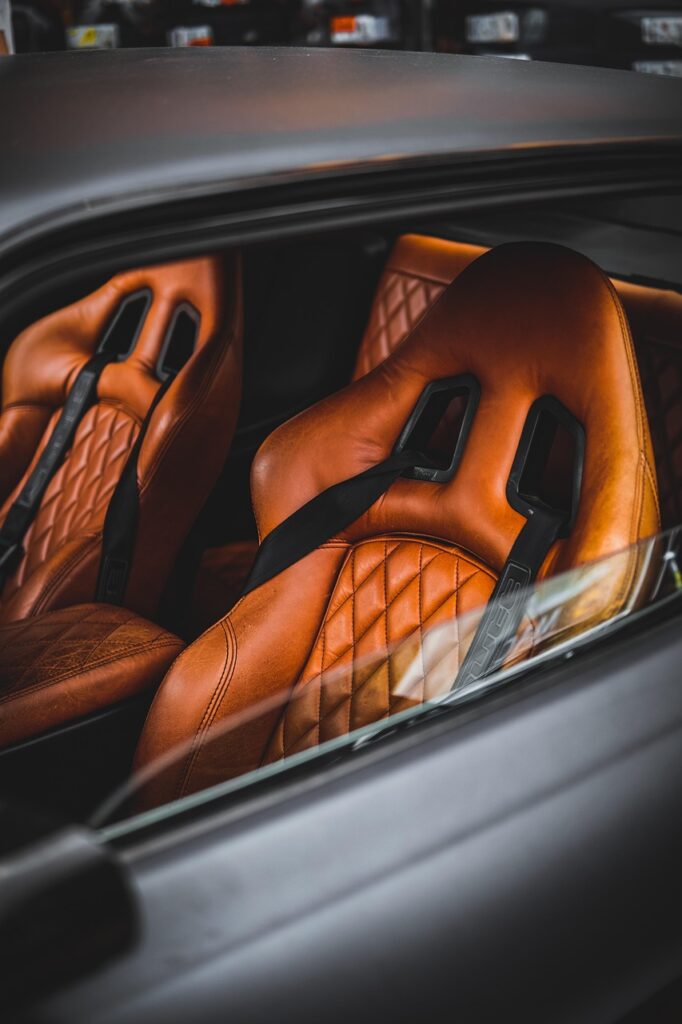
3. **The “Fit” Factor: Tailoring Equipment to the Human User**Central and indispensable to the entire philosophy and practical application of ergonomics is the fundamental concept of “fit.” As the foundational text explicitly states, “Human factors and ergonomics are concerned with the ‘fit’ between the user, equipment, and environment or ‘fitting a job to a person’ or ‘fitting the task to the man’.” This powerful principle fundamentally asserts that, rather than expecting the human operator to contort, adapt, or suffer through a poorly designed system, the system itself—be it a tool, a workstation, or crucially, a vehicle seat—should be meticulously crafted to accommodate the nuanced characteristics of the human user. In the highly specific and demanding context of vehicle seating, this principle is exceptionally critical and forms the bedrock of good design.
An awkward, uncomfortable, or suboptimal seat position emerges precisely when this essential “fit” is conspicuously absent or inadequately achieved. It signifies that the complex interplay between the seat itself, the steering wheel, the array of pedals, and the various dashboard controls fails to harmonize seamlessly with the driver’s unique body dimensions, their preferred or natural posture, and their inherent range of natural movements. The direct and often painful consequence of such a misalignment is frequently a forced, unnatural, and rigidly sustained posture that the human body struggles to endure over any period, inevitably leading to muscle strain, localized pressure points, and cumulative fatigue.
Achieving a genuinely effective and universal “fit” demands an extraordinarily meticulous attention to granular detail throughout every stage of the design and prototyping process. This multifaceted endeavor necessitates a profound understanding of the vast and inherent diversity among potential users. Designers must account for their widely varying body sizes, unique anatomical shapes, differential flexibility, and diverse biomechanical needs. The ultimate goal is to engineer adjustability features and integrated support mechanisms that can genuinely and effectively adapt to this remarkable human diversity, rather than imposing a single, restrictive template.
Without this conscious, user-centered effort to scientifically fit the equipment to the vast array of potential human users, a significant proportion of the driver population will inevitably experience not just transient discomfort, but chronic pain and persistent operational challenges. The concept of “fit” ensures that the design is inclusive and supportive, rather than exclusive and detrimental.

4. **Acknowledging Human Capabilities and Limitations**Effective ergonomic design is inherently reliant on a deep and nuanced understanding, and subsequent acknowledgment, of the user’s inherent capabilities and, equally important, their specific limitations. The overarching aim, as detailed in the context, is “to ensure that tasks, functions, information, and the environment suit that user.” This fundamental principle mandates a realistic recognition that human beings, despite their remarkable adaptability, possess inherent physiological and psychological boundaries. Critically, superior design should operate gracefully within these established boundaries, rather than ignorantly or carelessly pushing against them. For a driver navigating a complex environment, this encompasses a wide spectrum of factors including their optimal visual field, their comfortable reach envelope, their muscular strength, their cognitive processing speed, and their physical and mental endurance over varying durations.
When vehicle seat designs or interior layouts regrettably fail to adequately consider these critical human limitations, drivers are regrettably forced into uncomfortable positions. These positions frequently demand postures that either exceed their natural range of motion or compel them to sustain physically taxing and unnatural positions for extended periods. For instance, if a seat design omits or provides inadequate lumbar support, or if crucial vehicle controls are positioned inconveniently far beyond an easy reach, a driver’s natural anatomical and physiological capabilities are unduly stretched. This persistent strain invariably leads to accelerated fatigue, reduced responsiveness, and the increased potential for both acute and chronic injuries. Such designs, in essence, implicitly subscribe to a flawed “one-size-fits-all” user model, a paradigm that is rarely accurate in reality and almost invariably proves ineffective in practice.
By proactively embracing and integrating the full, scientifically documented spectrum of human capabilities and limitations into the design process, skilled ergonomists and engineers can innovatively create seats that are not merely mechanically adjustable but are also intuitively and organically supportive of the human body. This forward-thinking, proactive approach meticulously prevents the emergence of many common ergonomic “headaches.” It achieves this by engineering thoughtful solutions that inherently respect the human body’s intricate structure and its natural functions, rather than unfairly demanding that the user compensate for inherent design shortcomings through painful postural compromises. It is fundamentally about empowering the driver with optimal support, rather than inadvertently presenting them with a constant physical challenge.
This consideration of human variability extends to factors like age, where older adults may have reduced flexibility and strength, necessitating even greater adjustability and ease of use in seat and control designs.
Read more about: From Glory to Pain: Decoding the ‘Worst’ Bodybuilding Injuries and the Nuance of Athletic Catastrophe
5. **Analyzing the Task: Demands on the User and Activity Performed**A crucial step in assessing the crucial “fit” between a person and the technology they employ, particularly in complex systems like vehicles, is for human factors specialists or ergonomists to meticulously consider “the job (activity) being performed and the demands on the user.” For a driver, the “job” is a dynamically multifaceted and cognitively demanding one. It involves the continuous operation of a vehicle, intricate navigation, vigilant monitoring of traffic conditions, and the unwavering maintenance of critical situational awareness, often for extended and unbroken periods. Each of these interconnected tasks imposes a specific and unique set of demands—physical, visual, and cognitive—on the driver, all of which must be thoroughly understood.
Consequently, a vehicle’s seat design must be consciously engineered to robustly support these specific and varied demands. If, for example, the nature of the driving activity frequently involves quick and extensive head turns to check blind spots or merge safely, then the design of the headrest and seatback should absolutely not impede or restrict this essential range of motion. Similarly, if the task necessitates precise and subtle pedal control for smooth acceleration and braking, the seat position relative to the pedals must be optimally configured to allow for fine motor adjustments and nuanced force application without inducing strain or discomfort in the ankles, knees, or hips. Neglecting this vital interplay between the seat and the specific requirements of the driving task often leads to a setup that, while perhaps superficially comfortable for passive, stationary sitting, becomes profoundly problematic and fatiguing under active, dynamic driving conditions.
Furthermore, the anticipated duration of the driving activity represents an exceptionally critical factor that cannot be overlooked. Professional long-haul drivers, for instance, face vastly different and more sustained ergonomic demands compared to individuals undertaking short daily commutes. An ergonomically superior seat will proactively anticipate and thoughtfully accommodate these varied and prolonged demands. It will provide consistent, sustained comfort and unwavering support that effectively minimizes the accumulation of fatigue and vigilantly prevents the insidious onset of cumulative strain over extended periods. This meticulous attention to task analysis directly correlates to a more pleasant, safer, and ultimately more sustainable driving experience for all users, regardless of their journey length.
This analytical approach ensures that the design is not just theoretically sound but practically effective in the real-world operational environment.
6. **Equipment Design: Size, Shape, and Task Appropriateness**The inherent quality of the equipment employed, and more precisely, its specific size, intricate shape, and its overall appropriateness for the intended task, constitutes an absolutely direct and fundamental determinant of overarching ergonomic success or, conversely, abject failure. In the highly specialized context of vehicle seats, this critical principle directly translates to an exhaustive examination of the seat’s physical dimensions, its expertly engineered contouring, the precise density of its cushioning and padding, and the sophisticated functionality of its adjustability mechanisms. A seat that is either disproportionately too wide or too narrow, too unnaturally flat or excessively firm for the average human user, or critically, one that conspicuously lacks sufficient and intuitive adjustability, will, by its very nature, inevitably force the occupant into an awkward and uncomfortable position.
The “appropriateness” of the seat’s design for the dynamic and demanding driving task extends far beyond mere static comfort. It intricately encompasses a comprehensive array of crucial features. These include, but are not limited to, adequate side bolstering meticulously designed for effective lateral support during dynamic turns and evasive maneuvers, expertly engineered back support precisely contoured to maintain the human spine’s delicate natural “S” curve, and a thoughtfully shaped seat pan that judiciously distributes pressure evenly across the thighs and buttocks. If the inherent shape of the seat itself fails to accurately match the diverse contours of the human form, or fails to adequately support the body during the dynamic and often sudden movements intrinsic to driving, the driver will find themselves in a constant, fatiguing battle against the seat. This continuous struggle invariably culminates in persistent discomfort, instability, and an exacerbation of physical strain.
Moreover, the controls and interfaces designed for adjusting the seat are themselves an integral and often overlooked component of this critical “equipment.” Are these adjustment mechanisms intuitively designed, easily accessible without requiring awkward contortions, and smoothly operable with minimal physical effort? A seat that may be theoretically capable of extensive adjustment but is practically difficult and frustrating to manipulate actively contributes to an awkward and unsatisfactory user experience. The entirety of the seat’s physical properties, encompassing both its inherent structural design and its user control interfaces, must be meticulously engineered with an unwavering focus on the user and the specific driving task to truly ensure comprehensive ergonomic compatibility and to proactively avert the constant positional struggles that drivers often face.
This holistic view of equipment design emphasizes that every aspect, from the largest component to the smallest button, plays a role in the overall ergonomic experience and must be optimized for human interaction.
7. **Preventing Musculoskeletal Disorders (MSDs): A Primary Health Concern**The emphatic statement that “Proper ergonomic design is necessary to prevent repetitive strain injuries and other musculoskeletal disorders, which can develop over time and can lead to long-term disability” serves as a stark and unequivocal reminder of the profound and far-reaching consequences of neglecting fundamental ergonomic principles in seat design. An awkward, ill-fitting, or poorly supported seat position is not merely a transient source of irritation or fleeting discomfort; it represents a tangible and immediate precursor to the development of serious, chronic, and often debilitating health issues. These conditions, which can accumulate insidiously over time, possess the power to significantly impair an individual’s quality of life, their capacity for productive work, and their overall independence.
Work-related musculoskeletal disorders (WRMDs) are characterized by persistent pain, a debilitating loss of functional capacity, and frequently, complete work disability. The statistics related to these conditions, particularly in occupational settings, paint a sobering picture: “Every year, 1.8 million U.S. workers experience WRMDs and nearly 600,000 of the injuries are serious enough to cause workers to miss work.” While these figures often pertain to traditional office or industrial environments, the underlying physiological principles and the risks involved apply with equal force and relevance to any activity that necessitates sustained, repetitive, or awkward postures, such as driving, especially for individuals who rely on their vehicles for their livelihood or spend extensive hours on the road.
Therefore, addressing the root causes of these insidious disorders becomes paramount. These root causes invariably include localized mechanical pressures on soft tissues, the adoption of awkward and sustained postures that deviate from the body’s natural alignment, and the application of undue or prolonged force. Through the meticulous and informed application of thoughtful seat design, engineers can actively and effectively work to reduce these critical risk factors. An ergonomically superior seat is specifically engineered to proactively support the driver’s body in a neutral, naturally aligned, and relaxed posture, thereby minimizing strain on joints, muscles, and ligaments. This proactive approach to prevention is demonstrably and scientifically proven to be far more efficacious and ultimately beneficial than the reactive and often challenging endeavor of attempting to treat established musculoskeletal disorders once they have already tragically manifested. This powerfully underscores the critical and indispensable importance of embedding robust ergonomic design principles from the very initial stages of product development.
The long-term economic and human costs associated with WRMDs, including lost productivity, workers’ compensation claims, and diminished quality of life, further amplify the imperative for ergonomic excellence in all aspects of design that involve human interaction.
8. **Specialized Ergonomic Domains: Physical Ergonomics**The broad field of ergonomics encompasses several specialized domains, each addressing distinct aspects of human interaction within a system. Among these, physical ergonomics stands out as a critical area, directly concerned with the anatomical, physiological, and biomechanical characteristics of humans as they relate to physical activity. This specialization is fundamental in designing equipment and workplaces that physically “fit” the user, particularly in dynamic environments like vehicle interiors. It seeks to optimize performance while actively preventing the development of work-related musculoskeletal disorders.
Physical ergonomic principles are extensively applied in the design of both consumer and industrial products, with a core objective of reducing the mechanisms that lead to mechanically-induced acute and chronic musculoskeletal injuries and disorders. In the context of vehicle seating, this translates into meticulous consideration of how a driver’s body interacts with the seat, controls, and surrounding environment. Factors such as the seat’s contouring, the placement of pedals, and the steering wheel’s position are all scrutinized through a physical ergonomic lens to ensure alignment with natural human movement and posture.
Risk factors frequently associated with occupational environments, such as localized mechanical pressures, sustained force, and awkward postures in sedentary settings, are a primary focus of physical ergonomics. For drivers, these risks are amplified by prolonged periods in a fixed position, potentially leading to discomfort or injury. Engineers and designers leverage physical ergonomic data to identify and mitigate these hazards, aiming to create seat designs that evenly distribute pressure, support natural spinal curves, and allow for comfortable reach to controls, thereby minimizing strain on muscles and joints.
This domain is particularly vital for individuals with physiological ailments like arthritis or carpal tunnel syndrome, where even minor pressures can be intensely painful. Ergonomically designed products often serve to prevent or treat such disorders, offering relief from pressure-related chronic pain. By understanding these diverse human needs and limitations, physical ergonomics guides the development of seating solutions that are not only comfortable for the average user but also accessible and beneficial for a wider spectrum of individuals, enhancing overall well-being.
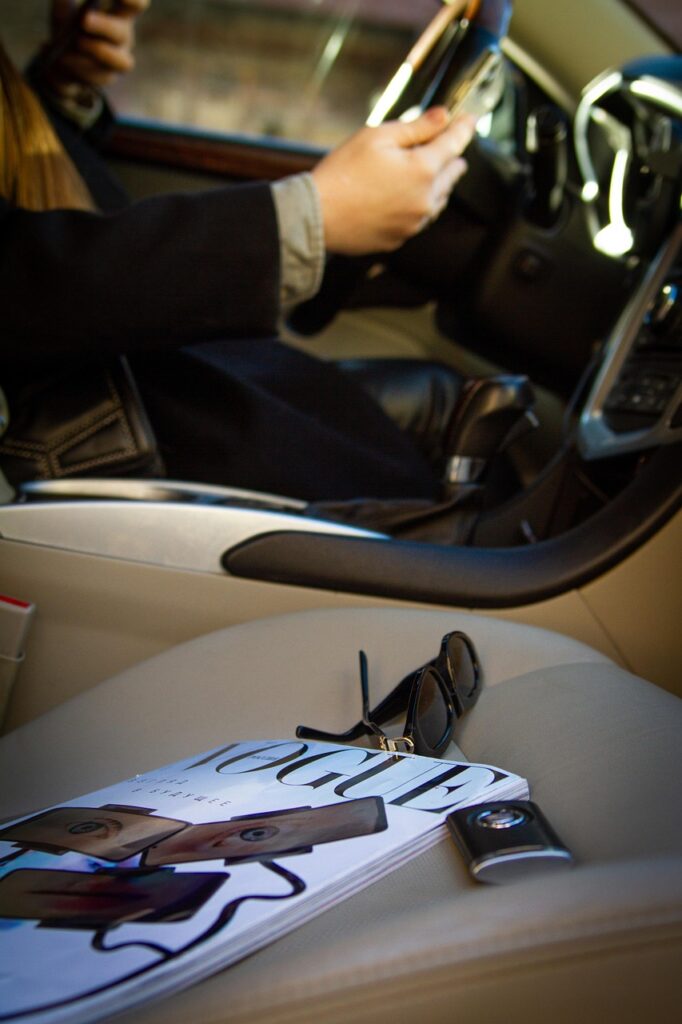
9. **Specialized Ergonomic Domains: Cognitive Ergonomics**Beyond the physical interaction, ergonomics also delves deeply into the mental processes that influence how humans engage with systems. This is the realm of cognitive ergonomics, a specialization concerned with perception, emotion, memory, reasoning, and motor response as they affect interactions between humans and system elements. For vehicle operators, cognitive ergonomics is crucial in designing dashboards, control layouts, and information displays to minimize mental workload and optimize decision-making, directly impacting safety and performance.
Relevant topics within cognitive ergonomics include mental workload, the processes of decision-making, the nuances of skilled performance, the critical aspect of human reliability, the impact of work stress, and the effectiveness of training. These factors are directly related to human-system and human-computer interaction design, particularly pertinent in modern vehicles equipped with advanced infotainment systems, driver-assist features, and complex control interfaces. A poorly designed interface, for instance, can overload a driver’s cognitive capacity, diverting attention from the road.
When designing vehicle interiors, cognitive ergonomists analyze how drivers perceive information from gauges and displays, how they process environmental cues, and how quickly and accurately they can recall and execute motor responses, such as adjusting climate controls or navigating infotainment menus. The goal is to present information clearly and intuitively, reducing the cognitive effort required and minimizing the potential for errors. This ensures that a driver’s mental resources are primarily focused on the complex task of driving safely, rather than struggling with system interaction.
This specialized domain also considers factors such as work stress and fatigue, which can significantly impair a driver’s cognitive functions. By optimizing the design of controls and information flow, cognitive ergonomics contributes to a less stressful driving environment, enhancing human reliability and overall system performance. This holistic approach recognizes that an uncomfortable seat isn’t just a physical burden; it can also be a source of cognitive distraction, further underscoring the interconnectedness of ergonomic principles in achieving optimal user experience.
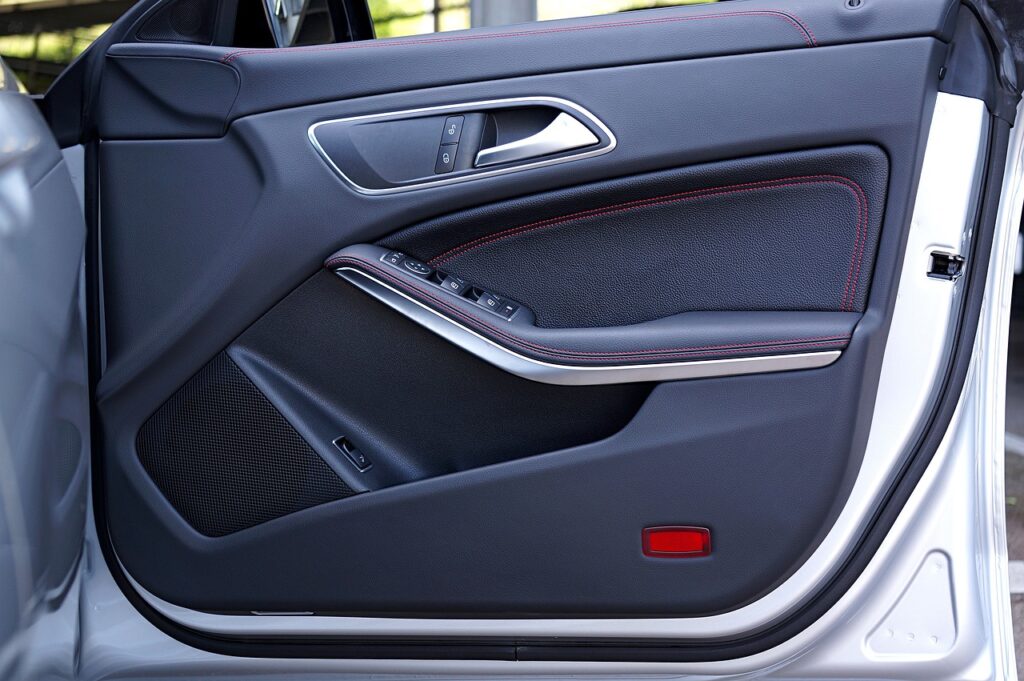
10. **The Critical Role of Anthropometry and Biomechanics in Seat Design**At the heart of both physical ergonomics and effective seat design lies the critical application of anthropometry and biomechanics. Anthropometry is the scientific study of the measurements and proportions of the human body, providing essential data on body size, shape, and mobility range across diverse populations. Biomechanics, conversely, applies mechanical principles to biological systems, analyzing the forces and movements of the human body. Together, these disciplines form the bedrock upon which truly ergonomic vehicle seats are built, ensuring a proper “fit” for a wide range of users.
Ergonomics explicitly draws on disciplines such as anthropometry and biomechanics in its comprehensive study of humans and their environments. In the context of vehicle seat design, anthropometric data guides the fundamental dimensions of the seat, including seat width, depth, backrest height, and the range of adjustability for elements like headrests and lumbar supports. This data helps designers accommodate the vast variability in human body sizes, ensuring that seats are neither too restrictive nor too expansive for a significant portion of the driver population.
Biomechanics, meanwhile, informs the structural integrity and dynamic support mechanisms of the seat. It helps engineers understand how forces are distributed across the body in various postures and movements, especially during acceleration, braking, and cornering. By analyzing joint torques, muscle fatigue, and pressure points, biomechanists ensure that the seat’s cushioning, bolstering, and recline mechanisms provide optimal support, maintain neutral spinal alignment, and minimize stress on vulnerable areas like the lower back, hips, and neck.
The collaboration between anthropometric data and biomechanical analysis is essential for creating seats that go beyond mere adjustability to offer genuine physiological support. It allows for the engineering of seats that respect the body’s natural “S” curve, distribute weight evenly, and reduce static load on muscles and ligaments. Without this foundational understanding, seat designs risk being arbitrary, failing to cater to the diverse needs of drivers and inevitably leading to the awkward, uncomfortable, and potentially injurious positions that are the hallmark of poor ergonomic design.

11. **Addressing Sedentary Behavior in Vehicle Design**The modern world has seen a significant shift towards more sedentary lifestyles, with a large proportion of the global workforce now engaged in occupations requiring low physical activity, predominantly in seated positions. This societal trend presents a unique and growing challenge for vehicle designers, as prolonged sitting in a sub-optimal seat position can have profound and detrimental health consequences. Understanding and mitigating the risks associated with sedentary behavior is therefore a critical aspect of contemporary ergonomic vehicle design.
Sedentary behavior is defined by a basal metabolic rate of 1.0–1.5 and primarily occurs while sitting or reclining. Research consistently demonstrates a dose-response relationship between sedentary time and all-cause mortality, with studies showing an increase of 3% mortality per additional sedentary hour each day. High quantities of uninterrupted sedentary time are also strongly correlated with an elevated risk of chronic diseases such as obesity, cardiovascular disease, type 2 diabetes, and various forms of cancer. For a driver, especially those spending extensive hours on the road, the vehicle seat transforms from a simple component into a significant health determinant.
While the primary context of these studies often focuses on office environments, the principles apply directly to the driving experience, particularly in commercial vehicles or for individuals with long commutes. Even a seemingly well-designed environment can still lead to discomfort and health risks if prolonged sitting is involved. Ergonomists working on vehicle interiors must consider how to counteract the negative effects of extended sedentary periods, incorporating features that promote subtle movement, improve circulation, and minimize static load on the body.
This may involve innovative seat designs that integrate dynamic support systems, adjustable lumbar and thigh support that encourages slight postural changes, or even subtle micro-movements within the seat itself. The aim is to interrupt prolonged static postures and reduce the cumulative strain that leads to discomfort and long-term health issues. By proactively addressing the challenges of sedentary behavior, vehicle manufacturers can contribute to the overall health and well-being of drivers, transforming the driving experience into a less hazardous activity for both immediate comfort and long-term health.
Read more about: The Science of Speed: Unveiling How Just 15 Minutes of Fast Walking Each Day Can Add Years to Your Life
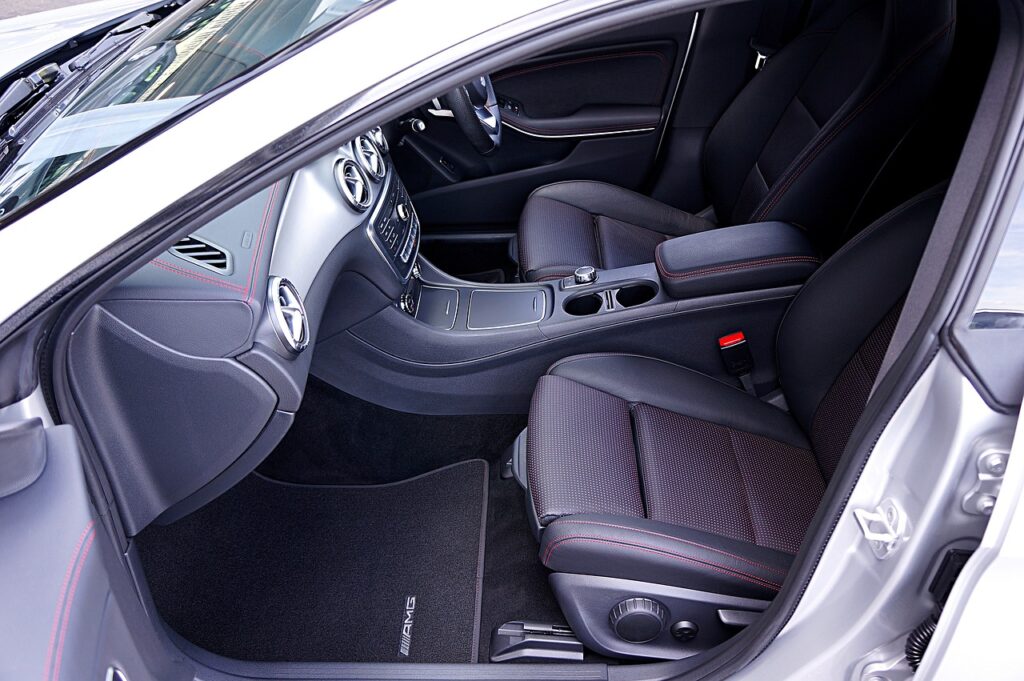
12. **Policy Implementation for Ergonomic Design**While scientific understanding and innovative design are crucial, the consistent application of ergonomic principles in vehicle manufacturing often requires the backing of robust policies and implementation strategies. Obstacles to integrating better ergonomic features, such as cost, time, and effort, exist for both companies and employees. Therefore, establishing clear guidelines and standards becomes essential to ensure that ergonomic excellence is not merely an aspiration but a mandated component of vehicle design, particularly for components as critical as seating.
The evidence strongly supports the importance of ergonomics, highlighting how ergonomic tools and designs can save companies money by reducing lost workdays and workers’ compensation cases. This economic benefit, coupled with the imperative to prevent chronic injuries and pain, underscores the need for proactive policy. As workplaces, including vehicle environments, become more technology-based and inherently sedentary, policies are becoming an indispensable mechanism to enforce health outcomes for employees and users.
In some sectors, such as occupational health and safety, policies have already begun to take shape. For instance, the state of Nevada’s risk management department has established clear ground rules for agencies’ responsibilities, including evaluating workstations, utilizing risk management resources, and maintaining OSHA records. While nationwide policies for consumer vehicle ergonomics are less common in the U.S., the example demonstrates how structured responsibilities can ensure systematic ergonomic considerations are met throughout the design, procurement, and usage phases.
The International Society of Automotive Engineers (SAE) plays a pivotal role in this regard, acting as a standards development organization for the engineering of powered vehicles. SAE encourages the design of vehicles in accordance with established human factors principles and regularly hosts conferences addressing all aspects of human factors and ergonomics. These professional organizations and their established standards serve as critical de facto policies, guiding manufacturers toward designs that prioritize user comfort, health, and safety, thereby minimizing the incidence of awkward seat positions from the outset.
Read more about: Beyond the Spectacle: What China’s Military Parade Reveals for Asia and a Reordering World
13. **Systematic Design Methodologies: Task Analysis**To effectively resolve and prevent awkward seat positions, designers must employ systematic methodologies that go beyond superficial adjustments. One such crucial method, rooted in activity theory, is task analysis. This process involves a systematic description of human interaction with a system or process to understand how to match the demands of that system or process to human capabilities. For vehicle seat design, task analysis is invaluable for dissecting the complex activities a driver performs and how the seat must support these actions.
Task analysis meticulously examines the specific actions, decisions, and cognitive processes required to operate a vehicle, from routine driving to emergency maneuvers. It considers how a driver reaches for controls, operates pedals, checks mirrors, and maintains vigilance over extended periods. For example, if a driver frequently needs to turn to check blind spots, the headrest and seatback design must not impede this natural range of motion. Similarly, precise pedal control necessitates a seat position that allows for fine motor adjustments without strain.
The complexity of task analysis is generally proportional to the complexity of the task being scrutinized, meaning it can vary in cost and time involvement. However, it is a qualitative and observational process best utilized early in the design process, allowing insights to influence fundamental seat architecture before designs become too rigid. By understanding the dynamic interplay between the driver’s body and the specific requirements of the driving task, designers can proactively engineer seat features that provide appropriate support for all anticipated activities.
Neglecting a thorough task analysis often leads to seats that are conceptually appealing but functionally inadequate under real-world driving conditions. A seat might feel comfortable when stationary but prove profoundly problematic and fatiguing during active driving if it fails to account for the physical and cognitive demands of operating the vehicle. Therefore, integrating task analysis ensures that the seat is not just a passive support structure but an active enabler of safe, efficient, and comfortable driving performance, preventing ergonomic headaches rooted in a mismatch between user and task.
Read more about: Unpacking the Unseen: A Deep Dive into the 14 Fundamental Facets of ‘Concept’ Itself
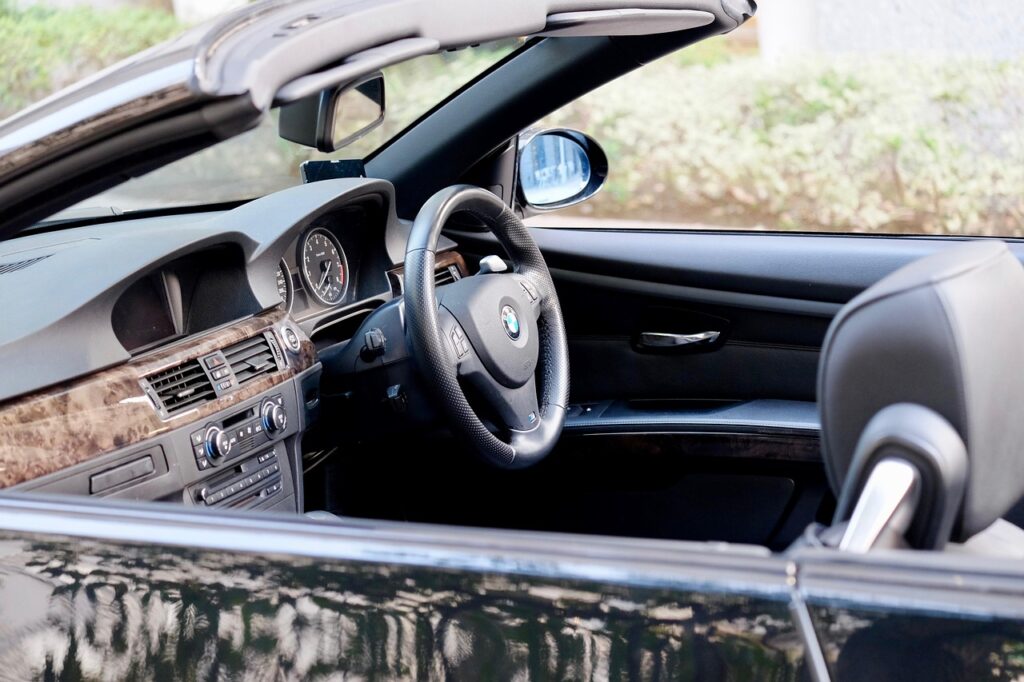
14. **Systematic Design Methodologies: Iterative Design (Prototyping)**Another powerful and systematic design methodology critical for optimizing vehicle seat ergonomics is iterative design, also widely known as prototyping. This approach actively seeks to involve users at multiple stages of the design process, allowing problems and shortcomings to be identified and corrected as they emerge, rather than at a costly, later stage. It is a continuous loop of design, test, analyze, and refine, ensuring that the final product genuinely meets user needs and ergonomic standards.
As prototypes of vehicle seats or entire interior layouts emerge from the initial design phase, they are subjected to rigorous evaluation. These evaluations can include a range of human factors analyses, such as user trials, usability testing, and even biomechanical assessments. The feedback and data gathered from these evaluations are then meticulously analyzed, and the results are directly incorporated into subsequent design iterations. This cycle of refinement allows designers to progressively address nuances in comfort, adjustability, and support that might not be apparent in initial theoretical models.
The iterative design process is particularly effective for complex products like vehicle seats because it accommodates the inherent variability of human users and the intricate demands of the driving task. Trends among users regarding comfort issues, access to controls, or postural strain are carefully tracked, prompting further redesigns. While this process can become costly if initiated too late, its early implementation ensures that fundamental flaws are caught and rectified before designs become too concrete and expensive to alter.
Through continuous user involvement and refinement, iterative design helps bridge the gap between theoretical ergonomic principles and practical, real-world application. It moves beyond a “one-and-done” approach to design, fostering a responsive and adaptive development cycle that is vital for creating seats that effectively prevent awkward positions and discomfort for a diverse user base. This commitment to ongoing improvement through prototyping is a hallmark of truly user-centered ergonomic engineering, delivering optimal “fit” and performance.
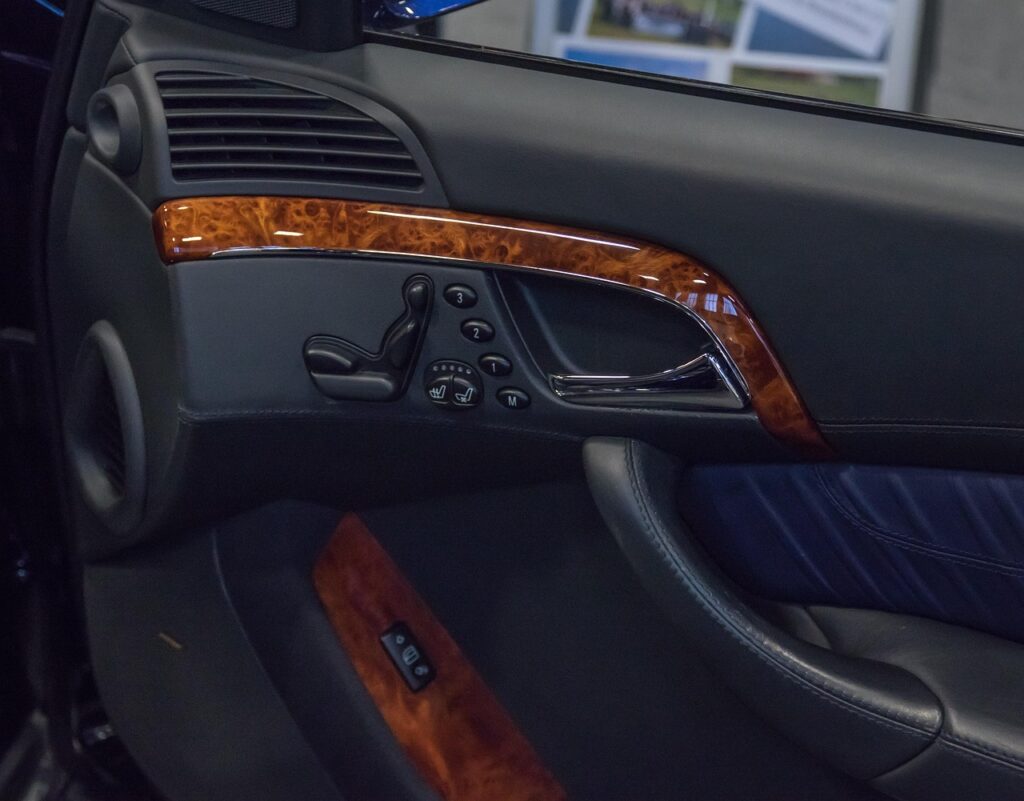
15. **Preventing Long-Term Health Risks: A Holistic Approach to Well-being**Ultimately, the comprehensive application of ergonomic principles and systematic design methodologies in vehicle seat development is not merely about addressing immediate discomfort; it is fundamentally about preventing long-term health risks and ensuring the holistic well-being of the driver. The persistence of awkward or poorly supported seat positions is a direct precursor to serious chronic health issues, particularly musculoskeletal disorders (MSDs), which can accumulate insidiously over time and significantly impair an individual’s quality of life and capacity for work.
Work-related musculoskeletal disorders (WRMDs) are characterized by persistent pain, loss of functional capacity, and frequently, work disability. These statistics, which see millions of U.S. workers experiencing WRMDs annually, with hundreds of thousands serious enough to cause missed work, underscore the gravity of neglecting ergonomic design. While often associated with industrial or office settings, the physiological risks of prolonged awkward postures apply equally to driving, especially for those who spend extensive hours behind the wheel.
Therefore, an ergonomic seat’s true value extends beyond comfort to its capacity to support the driver’s body in a neutral, naturally aligned posture, proactively minimizing strain on joints, muscles, and ligaments. This meticulous attention to design reduces critical risk factors such as localized mechanical pressures and sustained awkward postures. By embedding robust ergonomic principles from the initial stages of product development, engineers actively prevent the insidious onset of WRMDs, demonstrating a commitment to the driver’s long-term physical health.
Read more about: Is Your Car Making You Sick? An In-Depth Look at the Hidden Health Dangers Lurking in Your Vehicle
The journey to eradicate ergonomic headaches in vehicle seating is a multifaceted endeavor that demands a deep understanding of human factors, the rigorous application of specialized ergonomic domains, and the diligent use of systematic design methodologies. It’s about recognizing that the seat is not just a place to sit, but a critical interface that can either promote or undermine a driver’s comfort, safety, and long-term health. By prioritizing these comprehensive ergonomic considerations, we move closer to a future where every drive is a testament to thoughtful, human-centered design, freeing owners from the constant battle to find the right seat position.



